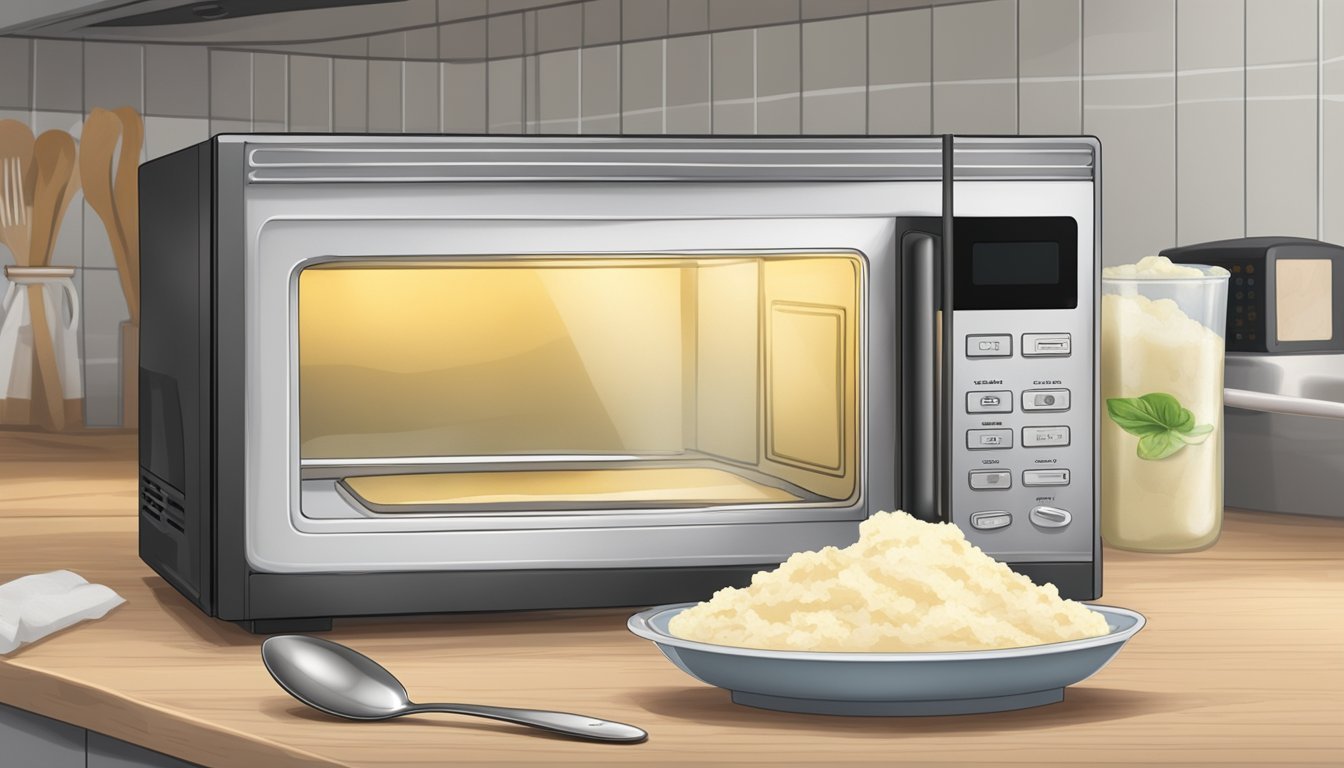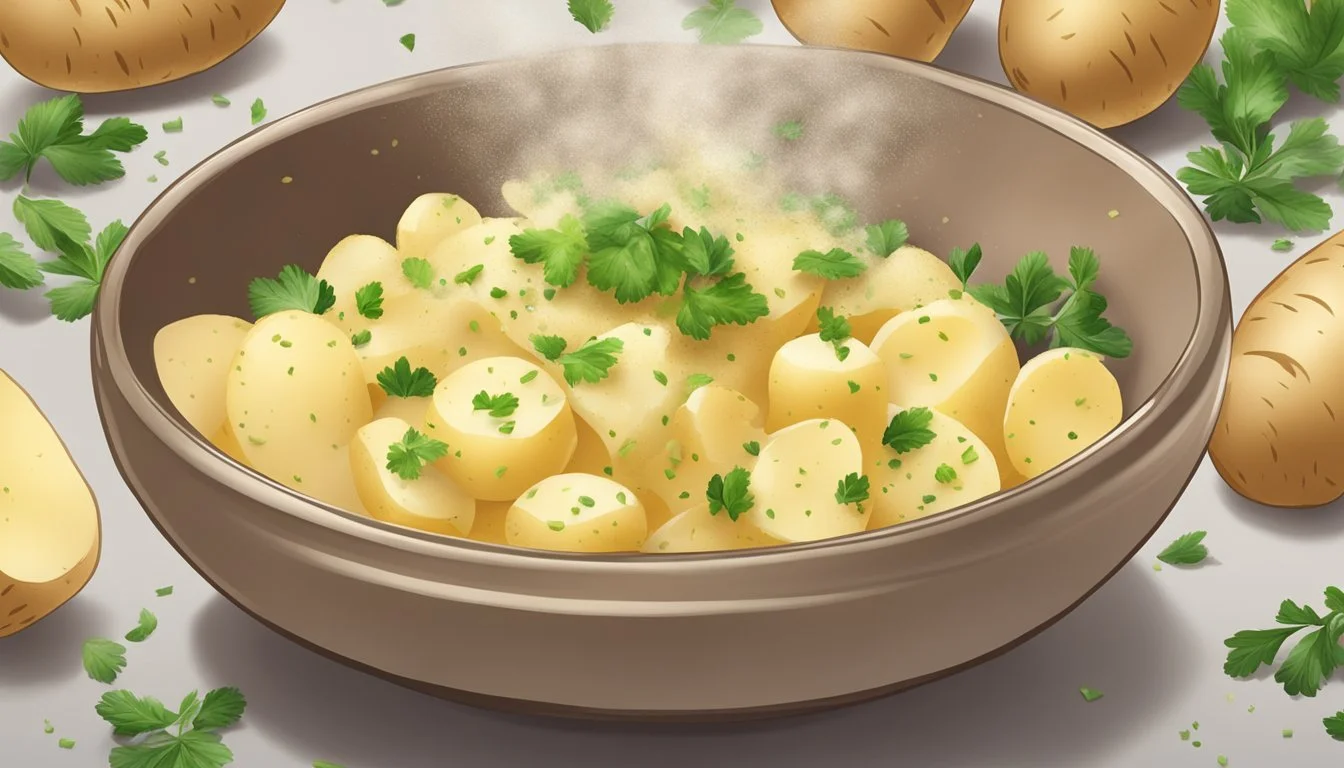How to Reheat Gluten-Free Mashed Potatoes for Best Results
Reheating gluten-free mashed potatoes can be straightforward and ensures they retain their creamy, delicious texture. The best way to reheat gluten-free mashed potatoes is to use the stovetop with a bit of added liquid like dairy-free milk or broth to maintain their smooth consistency. This method helps avoid any potential dryness that can come from reheating.
For those short on time, the microwave offers a quick alternative. Place the mashed potatoes in a microwave-safe dish, cover them with a damp paper towel, and heat in short intervals, stirring occasionally, to ensure even warming. This will help keep the potatoes moist and prevent them from becoming grainy.
Using the oven can also achieve excellent results, especially if reheating larger portions. Place the potatoes in an oven-safe dish, cover with foil, and warm at a low temperature until heated through. Adding a bit of dairy-free butter on top can help to enhance the flavor and keep the potatoes rich and creamy.
Understanding Gluten-Free Mashed Potatoes
Gluten-free mashed potatoes are naturally safe for those with gluten sensitivities when prepared correctly. Key considerations include selecting the right potatoes and enhancing the dish with flavorful gluten-free ingredients.
The Basics of Gluten-Free
Mashed potatoes are inherently gluten-free when made with basic ingredients like potatoes, butter, and milk. Avoid adding mix-ins or seasonings that could contain gluten. Labels on processed foods should be checked to ensure they are certified gluten-free.
Ingredients to Avoid:
Prepared mixes with unspecified thickeners
Gravy that isn’t labeled gluten-free
Choosing the Right Potatoes
The type of potato chosen influences the texture of the mashed potatoes. Russet potatoes are high in starch and yield a fluffy, smooth mash. Yukon Gold potatoes have a creamy texture and rich, buttery flavor, perfect for dense and flavorful mashed potatoes.
Potato Selection:
Russet Potatoes: Light, fluffy texture
Yukon Gold Potatoes: Creamier, richer flavor
Key Ingredients for Flavor
Enhancing the flavor of gluten-free mashed potatoes involves using high-quality, gluten-free ingredients. Butter and milk or cream are traditional choices that add richness. For a dairy-free version, dairy-free butter and dairy-free milk options are available.
Seasonings such as salt, pepper, and garlic powder can be added without worrying about gluten.
Flavor Enhancers:
Butter: Provides a rich taste
Milk or Cream: Adds creaminess
Dairy-Free Alternatives: Suitable for dairy-sensitive individuals
Salt and Pepper: Essential for basic seasoning
Garlic Powder: Adds a mild, savory note
These elements combine to create mashed potatoes that are both delicious and safe for those avoiding gluten.
Preparing the Potatoes
To ensure the best texture and flavor for gluten-free mashed potatoes, it's crucial to properly prepare the potatoes beforehand. This involves peeling, boiling, and mashing the potatoes to achieve a creamy and fluffy consistency.
Peeling and Boiling
Start by peeling the potatoes thoroughly, removing all skin to avoid any unwanted texture. Once peeled, cube the potatoes into uniform pieces, roughly one inch in size, to ensure even cooking. Place the cubed potatoes in a large pot and cover them with cold water.
Next, bring the pot to a boil over medium-high heat. Boil the potatoes until they are fork-tender, which typically takes around 10-15 minutes. Test a potato by piercing it with a fork; it should slide in easily without breaking the potato apart. Drain the potatoes in a colander and let them sit briefly to allow excess moisture to evaporate. This step is key for achieving a fluffy consistency later.
Achieving the Perfect Texture
Returning the drained potatoes to the pot, use a potato masher to break them down. For the creamiest texture, consider using a hand mixer at low speed. Start by adding some butter, salt, and a bit of milk or dairy-free alternative.
Mash or mix the potatoes until smooth and lump-free. The goal is to achieve a creamy yet fluffy consistency. If the potatoes seem too dry, you can add more milk or butter, a little at a time.
Remember, over-mixing can make the mashed potatoes gluey, so mix until just combined. The final results should be light, airy, and perfect for reheating when you're ready to serve.
Mashing and Seasoning
To achieve perfect gluten-free mashed potatoes, it is essential to focus on both the mashing process and the choice of seasonings. These elements play a vital role in determining the texture and flavor of the final dish.
Creating Creamy Mashed Potatoes
For a creamy texture, Yukon Gold potatoes are an excellent choice due to their natural buttery flavor and smooth texture. Begin by peeling and cutting the potatoes into equal-sized pieces to ensure even cooking. Boil the potatoes in salted water until they are fork-tender, which generally takes 12-18 minutes.
Drain the potatoes thoroughly and return them to the pot. Mash using a potato masher or ricer for a smoother consistency. For added creaminess, mix in butter and whole milk. Consider blending in sour cream or cream cheese for extra richness. Utilizing a hand mixer can help achieve a fluffy texture, but avoid over-mixing to prevent a gluey result.
Enhancing Taste with Seasonings
Seasonings are crucial in elevating the flavor of mashed potatoes. Start with basics like salt and pepper, adjusting to taste. Incorporating garlic powder or freshly minced garlic can add depth.
For a cheesy twist, mix in grated cheese such as cheddar or Parmesan during the mashing stage. Finish with fresh or dried chives to add a subtle onion flavor. Adjust the amount based on preference, starting with a teaspoon and increasing as needed. Combining these seasonings ensures that the mashed potatoes are flavorful and satisfying.
Proper Storage Techniques
Proper storage ensures that gluten-free mashed potatoes remain fresh and delicious. Key factors include cooling correctly, using airtight containers, and knowing how to freeze and thaw potatoes properly.
Cooling for Storage
Allow mashed potatoes to cool quickly and evenly after cooking. Spread them in a thin layer on a baking sheet to speed up cooling. This prevents bacterial growth that can occur if food stays warm for too long. Avoid placing hot mashed potatoes directly into the refrigerator, as this can raise the fridge’s temperature and affect other stored foods.
Utilizing Airtight Containers
Store cooled mashed potatoes in airtight containers to maintain freshness and prevent moisture loss. Choose containers that seal tightly to avoid air exposure, which can cause drying out and flavor compromise. Label containers with the date of storage to keep track of how long the leftovers have been kept. For best results, use within 3-4 days.
Freezing and Thawing
Freezing mashed potatoes extends their shelf life significantly. Place cooled potatoes in freezer-safe, airtight containers or heavy-duty freezer bags. Remove excess air from bags before sealing. For best quality, consume frozen mashed potatoes within 2 months. Thaw frozen potatoes in the refrigerator overnight before reheating. Avoid microwave thawing, as it can lead to uneven texture and temperature. Keeping these guidelines in mind ensures optimal flavor and texture.
Reheating Gluten-Free Mashed Potatoes
Preserving the texture and creaminess of gluten-free mashed potatoes is key when reheating. Here are effective methods for reheating mashed potatoes to maintain their delicious consistency.
Stovetop Reheating Instructions
Reheating mashed potatoes on the stovetop helps retain their texture. Place the mashed potatoes in a saucepan.
Add a small amount of water, milk, or butter, depending on preference, to keep them moist.
Heat over low to medium heat, stirring occasionally to prevent sticking. Continue to stir until they are heated through. If the consistency is too thick, add a little more liquid. This method is perfect for keeping the potatoes creamy and smooth.
Microwave Reheating Tips
Microwaving can be a quick way to reheat mashed potatoes. Place the mashed potatoes in a microwave-safe dish. Add a splash of water or butter, cover the dish with a microwave-safe lid or wrap.
Heat on medium power for about 1-2 minutes, stirring halfway through. Repeat this process until the mashed potatoes are heated evenly. This method is ideal for small portions and maintains the creaminess effectively.
Baking Sheet Reheating Method
For large batches, the baking sheet method is ideal. Spread the mashed potatoes evenly on a baking sheet. Preheat the oven to 350°F (175°C).
Cover the potatoes with aluminum foil to prevent them from drying out. Bake for 20-30 minutes, stirring once or twice to ensure even heating. If they seem dry, add a bit of butter or milk. This method is great for events like Thanksgiving and Christmas, ensuring the potatoes stay creamy and delicious.
Serving Suggestions and Variations
Reheated gluten-free mashed potatoes can be served alongside various dishes and enhanced with creative add-ins to suit different palates. Consider pairing them with compatible dishes or adding ingredients to elevate their flavor.
Accompanying Dishes
Reheated gluten-free mashed potatoes make an excellent side dish for many meals:
Roasted Meats: Pair with roast chicken, turkey, or beef for a classic combination.
Vegetarian Main Courses: Serve with gluten-free green bean casserole, roasted vegetables, or a hearty salad.
Gravy: Top with gluten-free gravy or a dairy-free alternative for additional moisture and flavor.
Seafood: Complement fish or shrimp, especially with garlic butter or lemon.
Creative Add-ins
Enhance the reheated potatoes by incorporating bold flavors and textures:
Bacon: Add crispy bacon bits for a smoky, savory twist.
Garlic: Mix in minced or roasted garlic for garlic mashed potatoes with depth.
Herbs: Fresh herbs like parsley, chives, or rosemary can add brightness.
Cheese & Dairy-Free Alternatives: Incorporate cheddar, parmesan, or dairy-free cheese for richness.
Spices: Spice them up with paprika, nutmeg, or a pinch of cayenne.
These variations can transform basic reheated mashed potatoes into a delicious, customized dish.
Health and Dietary Considerations
Reheating gluten-free mashed potatoes can be easily adapted to meet various dietary needs. This includes preparing vegan and dairy-free options, as well as avoiding common allergens.
Dairy-Free and Vegan Options
For those following a dairy-free or vegan diet, traditional dairy ingredients can be substituted with alternatives. Vegan butter and almond milk are excellent replacements for butter and milk, respectively. These substitutions maintain the creamy texture without compromising flavor.
Vegan butter: Provides richness and is free from animal products.
Almond milk: Offers a mild and nutty flavor while ensuring the dish remains creamy.
Adding nutritional yeast can enhance the flavor, contributing a subtle, cheesy taste suitable for vegan diets.
Allergen Information
Understanding potential allergens in gluten-free mashed potatoes is important for those with dietary restrictions. Common allergens like dairy can be replaced with dairy-free butter and almond milk to make the dish accessible to those with lactose intolerance or a dairy allergy.
Some recipes may include nuts (e.g., almond milk), so be mindful of nut allergies.
Always verify that all ingredients, including seasonings, are gluten-free, as contamination can occur.
By being attentive to these considerations, gluten-free mashed potatoes can be a safe and delicious addition to diverse dietary menus.






